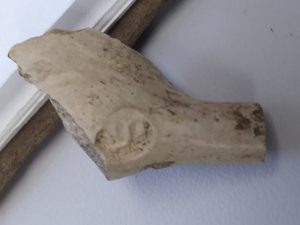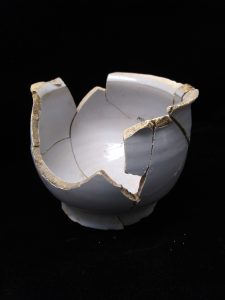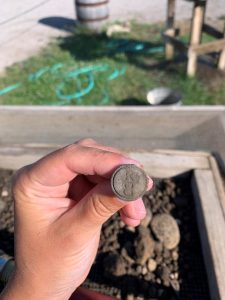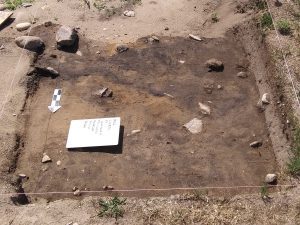
The first half of the 2023 Michilimackinac archaeological field season has flown by. The cellars continue to yield interesting artifacts. In addition to the gaming die found during our opening week (Our 65th Season Begins! – Mackinac State Historic Parks | Mackinac State Historic Parks (mackinacparks.com), an unusual white clay smoking pipe bowl fragment was recovered from the north edge of the central cellar. White clay pipe fragments are fairly common, but they are usually plain. This one was stamped with a maker’s mark. The motif is a jumping deer. It was used by a series of Dutch pipemakers in Gouda from 1660 to at least 1776. This is a reminder of the worldwide trade networks of which Michilimackinac was a part.

In the southeast cellar, the most interesting artifacts have been plain white tin-glazed earthenware ceramic sherds. These were able to be matched with some sherds from last season to form an ointment pot. This is the second ointment pot we have been able to reconstruct from the southeast cellar.

We also have been working in the northern section of the excavation. At the beginning of this season, most of this area was in the layer of rubble from the 1781 demolition of the fort. Interesting finds from this area include part of a stone smoking pipe bowl, two gilt sequins and two pewter buttons from the 8th Regiment. These are the soldiers who demolished the fort.
In some areas all the demolition rubble has been removed, revealing the north wall trench of the building cutting through beach sand. This is easier to see in the west end of the house because a tree was planted in the east of the wall trench in the early twentieth century. While the location of the fort was never forgotten, its interior layout was.

The 2023 archaeology season continues through August 19. Visitors to Colonial Michilimackinac can watch archaeologists uncover history seven days a week, weather permitting, until then.









